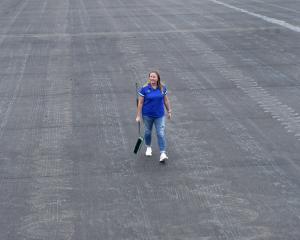
Those involved said the civil defence response ran smoothly, but there was also criticism that information about the tsunami risk was too slow to reach some people in the region.
Dunedin Civil Defence Emergency Management (DCDEM) declared a state of emergency over the tsunami risk and co-ordinated the evacuation of low-lying coastal areas, including Waikouaiti, Karitane, Waitati, Brighton and parts of Otago Peninsula.
Joining those woken by emergency services were members of the public who took the decision to evacuate after reading or hearing national warnings to move to higher ground.
Dunedin South MP Clare Curran said there was ''confusion'' in the South Dunedin area as people were unsure whether they should evacuate.
After a national call for people living in low-lying areas to evacuate, many residents got in their cars and found higher ground, whether that was a car park or a family member's house.
It was not until 3am that DCDEM put out an alert saying that protection from the dunes meant South Dunedin was not at risk.
Ms Curran said authorities should have put that information out earlier.
However, she felt the overall response was a ''huge improvement'' to the flooding in June last year.
Dunedin City Council (DCC) chief executive Sue Bidrose, who was among staff called in when a state of emergency was declared in Dunedin, said the initial focus was on the areas most at risk.
''Obviously, telling people who do need to evacuate, that they should, takes priority over telling people that they don't need to evacuate,'' Ms Bidrose said.
She praised people who took a cautious approach and evacuated from South Dunedin after the national warning was issued.
Otago Regional Civil Defence and Emergency Management Group manager Chris Hawker, who took over as manager of the new cross-council role less than two weeks ago, was pleased with how the response went.
DCC and Otago Regional Council staff worked together well, especially seeing as the new group was yet to take part in a training exercise, Mr Hawker said.
''Going straight into a real live event was not the way that we planned it, but of course Mother Nature doesn't give us that luxury.''
About 50 people in the Clutha district, including campers, used evacuation centres set up by the Clutha District Council at Owaka, Taieri Mouth and Tokomairiro Mouth.
Civil defence controller David Campbell said it was likely others evacuated to higher ground with nearby friends or family.
The council, which was well prepared, relied on media releases, social media and radio stations to notify the public about the warning.
Taieri Mouth had no plan, making things trickier there, Mr Campbell said.
Some spoken to yesterday were concerned they were not contacted, or were contacted late.
Taieri Mouth Beach Holiday Camp owner Paula Poutu said she was not alerted until the fire brigade knocked on her door about 5am.
She said she would have liked to have been notified sooner given the fact the holiday park she ran was beside the sea at sea level.
Newhaven Holiday Park owner Jude Mulholland was also concerned she was not contacted by officials.
She was alerted by a family member about 2am, evacuated the holiday park near Surat Bay, alerted neighbours and went to the Owaka Community Centre.
Waitaki District Council spokeswoman Alena Lynch said no official evacuations were conducted along the North Otago coast.
However, the Kakanui community set off its tsunami warning alarm about 4am.
-Additionally reported by Samuel White and Shannon Gillies












